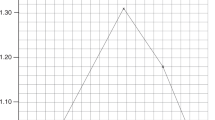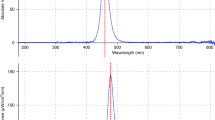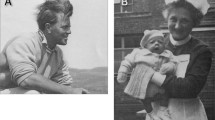Abstract
OBJECTIVE: To determine the efficacy of blue versus blue-green phototherapy using new light sources with narrow luminous spectra. The devices made of high-intensity gallium nitride light-emitting diodes (LEDs) were also compared to conventional halogen-quartz bulbs phototherapy.
DESIGN: Prospective open randomized study.
PARTICIPANTS: A total of 114 jaundiced, but otherwise healthy term infants who met the entry criteria for phototherapy set by the American Academy of Pediatrics' Practice Parameter.
MAIN OUTCOME MEASURES: The duration of phototherapy and the rate of decrease in total serum bilirubin (TSB).
RESULTS: The mean TSB concentrations at initiation and termination of treatment, as well as the duration of phototherapy and the rate of decrease in TSB, were not statistically different in newborns receiving blue LED, blue-green LED or conventional phototherapy. The average rate of decrease in TSB (slope), after adjustment by a linear regression analysis for confounding factors, was −3.61 μmol/hour (95% confidence limits −5.47, −1.75) in the 25 newborns receiving blue LED phototherapy compared with −2.57 μmol/hour (−4.32, −0.82) in the 22 newborns treated with blue-green LED phototherapy and −3.42 μmol/hour (−5.02, −1.81) in the 57 newborns who received conventional phototherapy.
CONCLUSIONS: When using low light irradiance, there was no statistically significant difference in the effectiveness of phototherapy using blue-green LEDs, blue LEDs or conventional halogen-quartz bulbs.
This is a preview of subscription content, access via your institution
Access options
Subscribe to this journal
Receive 12 print issues and online access
$259.00 per year
only $21.58 per issue
Buy this article
- Purchase on Springer Link
- Instant access to full article PDF
Prices may be subject to local taxes which are calculated during checkout
Similar content being viewed by others
References
American Academy of Pediatrics. Provisional Committee for Quality Improvement and Subcommittee on Hyperbilirubinemia. Practice parameter: Management of hyperbilirubinemia in the healthy term newborn. Pediatrics 1994;94:558–565.
Ennever JF . Blue light, green light, white light, more light: treatment of neonatal jaundice. Clin Perinatol 1990;17:467–481.
Maisels JM . Phototherapy — traditional and nontraditional. J Perinatol 2001; 21(S1): S93–S97.
Ayyash H, Hadjigeorgiou E, Sofatzis J, Chatziioannou A, Nicolopoulos D, Sideris E . Green light phototherapy in newborn infants with ABO hemolytic disease. Pediatrics 1987;111:882–887.
Vecchi C, Dozelli GP, Migliorini MG . Green light in phototherapy. Pediatr Res 1983;17:461–466.
Vecchi C, Dozelli GP, Sbrana G, Pratesi R . Phototherapy for neonatal jaundice: Clinical equivalence of fluorescent green and “special” blue lamps. J Pediatr 1986;108:452–456.
Amato M, Inaebnit D . Clinical usefulness of high intensity green light phototherapy in the treatment of neonatal jaundice. Eur J Pediatr 1991;150:274–276.
Ayyash H, Hadjigeorgiou E, Sofatzis I, Dellagrammaticas H, Sideris E . Green or blue light phototherapy for neonates with hyperbilirubinaemia. Arch Dis Child 1987;62:843–845.
Donzelli GP, Pratesi S, Rapisardi G, Agati G, Fusi F, Pratesi R . One-day phototherapy of neonatal jaundice with blue-green lamp. Lancet 1995;346:184–185.
Tan KL . Efficacy of fluorescent daylight, blue, and green lamps in the management of nonhemolytic hyperbilirubinemia. J Pediatr 1989;114:132–137.
Vreman HJ, Wong RJ, Stevenson DK, et al. Light emitting diodes: A novel light source for phototherapy. Pediatr Res 1998;44:804–809.
Seidman DS, Moise J, Ergaz Z, et al. A new blue light-emitting phototherapy device: A prospective randomized controlled study. J Pediatr 2000;136:771–774.
Ennever JF, McDonagh AF, Speck WT . Phototherapy for neonatal jaundice: Optimal wavelengths of light. J Pediatr 1983;103:295–299.
Ballowitz L, Geutler G, Krochmann J, Pannitschka R, Roemer G, Roemer I . Phototherapy in Gunn rats. A study to assess the photobiologically most effective radiant energy and dose/response relationships. Biol Neonate 1977;31:229–244.
Ennever JF . Phototherapy for neonatal jaundice. In: Polin RA, Fox WW, editor. Fetal and Neonatal Physiology. 2nd ed. Philadelphia, PA: W.B. Saunders Company; 1998. p. 1505–1513.
Pratesi R, Ronchi L, Cecchi G, Sbrana G, et al. Skin optics and phototherapy of jaundice. Photochem Photobiol 1984;40:77–83.
Malhotra V, Greenberg JW, Dunn LL, Ennever JF . Fatty acid enhancement of the quantum yield for the formation of lumirubin from bilirubin bound to human albumin. Pediatr Res 1987;21:530–533.
Gutcher GR, Yen WM, Odell GB, Gutcher GR, Yen WM, Odell GB . The in vitro and in vivo photoreactivity of bilirubin: I. Laser-defined wavelength dependence. Pediatr Res 1983;17:120–123.
Agati G, Fusi F, Pratesi R . Configurational photoisomerization of bilirubin in vitro—II. A comparative study of phototherapy fluorescent lamps and lasers. Photochem Photobiol 1985;41:381–392.
Jacobson ED, Krell K . Genetic effects of fluorescent lamp radiation on eukaryotic cells in culture. Photochem Photobiol 1982;35:875–879.
Christensen T, Reitan JB, Kinn G . Single-strand breaks in the DNA of human cells exposed to visible light from phototherapy lamps in the presence and absence of bilirubin. J Photochem Photobiol B 1990;7:337–346.
Bohm F, Drygalla F, Charlesworth P, Bohm K, Truscott TG, Jokiel K . Bilirubin phototoxicity to human cells by green light phototherapy in vitro. Photochem Photobiol 1995;62:980–983.
Christensen T, Kinn G, Granli T, Amundsen I . Cells, bilirubin and light: Formation of bilirubin photoproducts and cellular damage at defined wavelengths. Acta Paediatr 1994;83:7–12.
Acknowledgements
This work was supported by the National Institute of Health, Grant HD 14426. The Hess Research Fund, the Mary L. Johnson Research Fund, and a grant from the Stanford University Office of Technology Licensing. We gratefully acknowledge the generous advice we received from Martin M. Fejer, PhD, and Rodger K. Route, PhD, during the development phase of the device. We thank Randy Reeve and Michael Philpott for technical advice on biomedical safety issues.
Author information
Authors and Affiliations
Rights and permissions
About this article
Cite this article
Seidman, D., Moise, J., Ergaz, Z. et al. A Prospective Randomized Controlled Study of Phototherapy Using Blue and Blue-Green Light-Emitting Devices, and Conventional Halogen-Quartz Phototherapy. J Perinatol 23, 123–127 (2003). https://doi.org/10.1038/sj.jp.7210862
Published:
Issue Date:
DOI: https://doi.org/10.1038/sj.jp.7210862
This article is cited by
-
Action spectrum of phototherapy in hyperbilirubinemic neonates
Pediatric Research (2022)
-
History and current standard of postnatal management in hemolytic disease of the fetus and newborn
European Journal of Pediatrics (2022)
-
Effect of blue LED phototherapy centered at 478 nm versus 459 nm in hyperbilirubinemic neonates: a randomized study
Pediatric Research (2021)
-
New high intensity fibreoptic phototherapy devices in healthy newborns: a single pad wrapped around the neonate body in comparison with a double pad device
Italian Journal of Pediatrics (2019)
-
The effect of light wavelength on in vitro bilirubin photodegradation and photoisomer production
Pediatric Research (2019)



